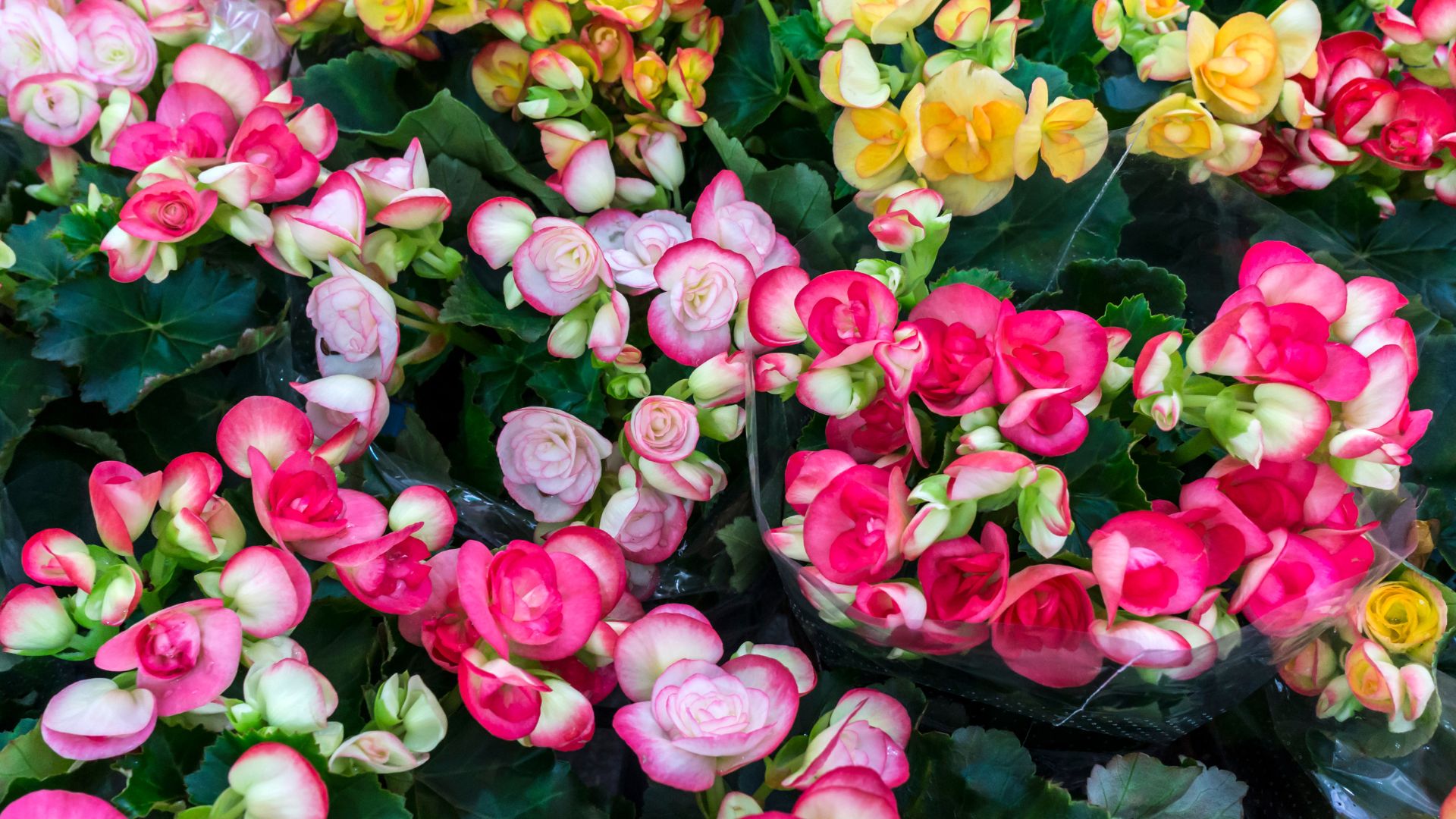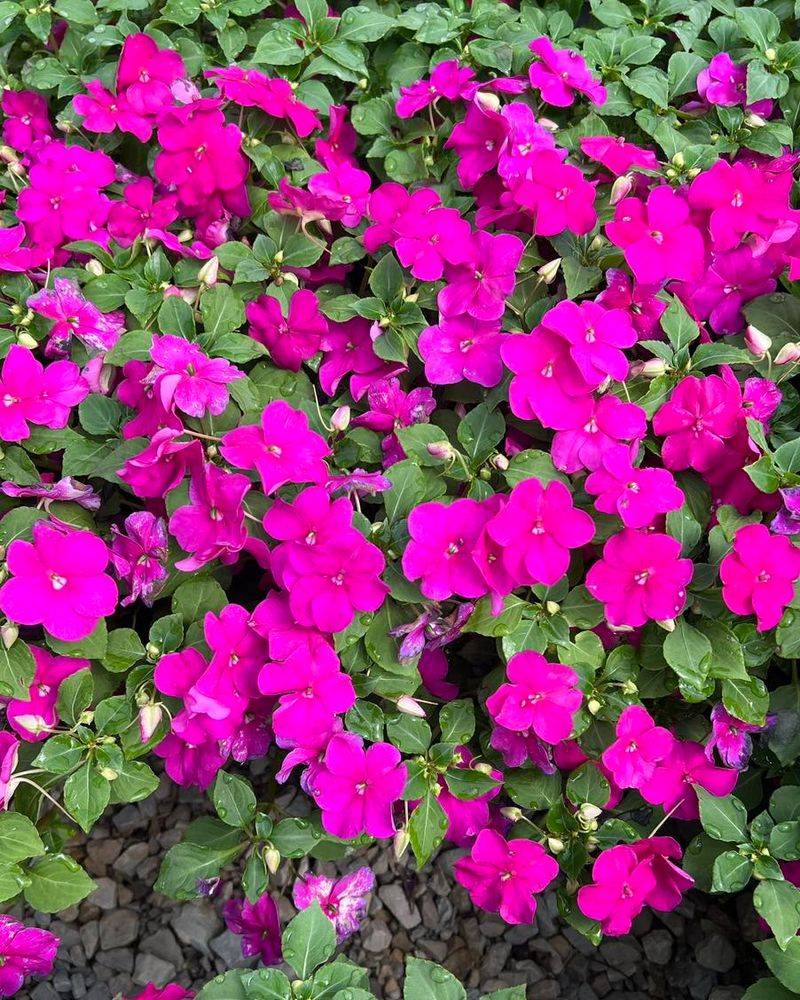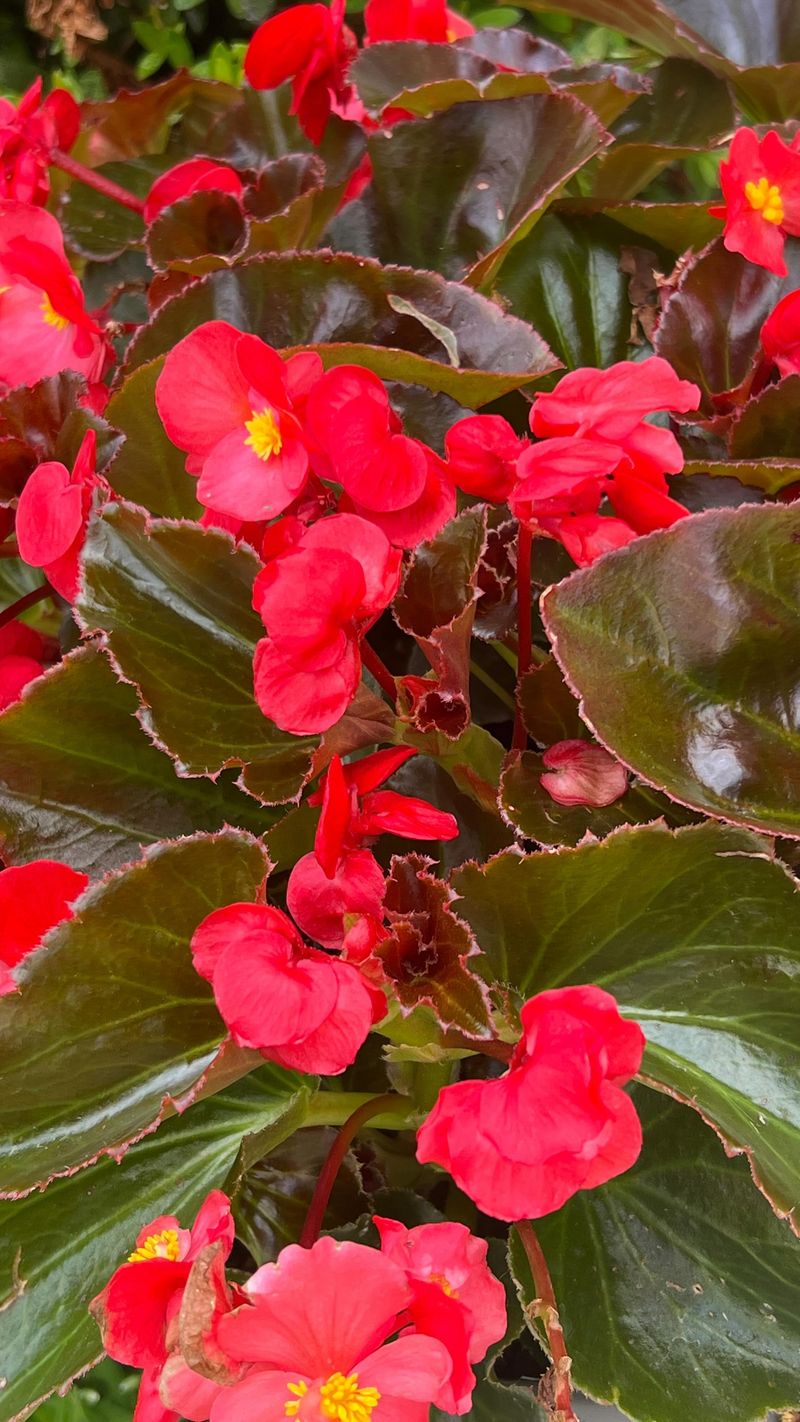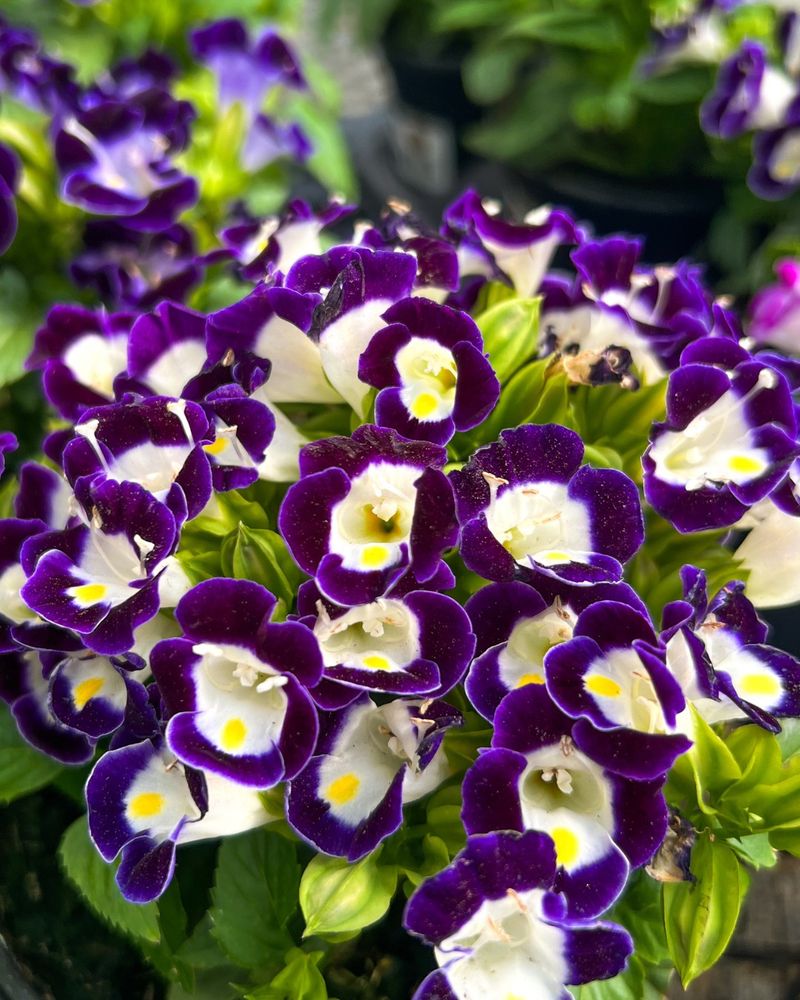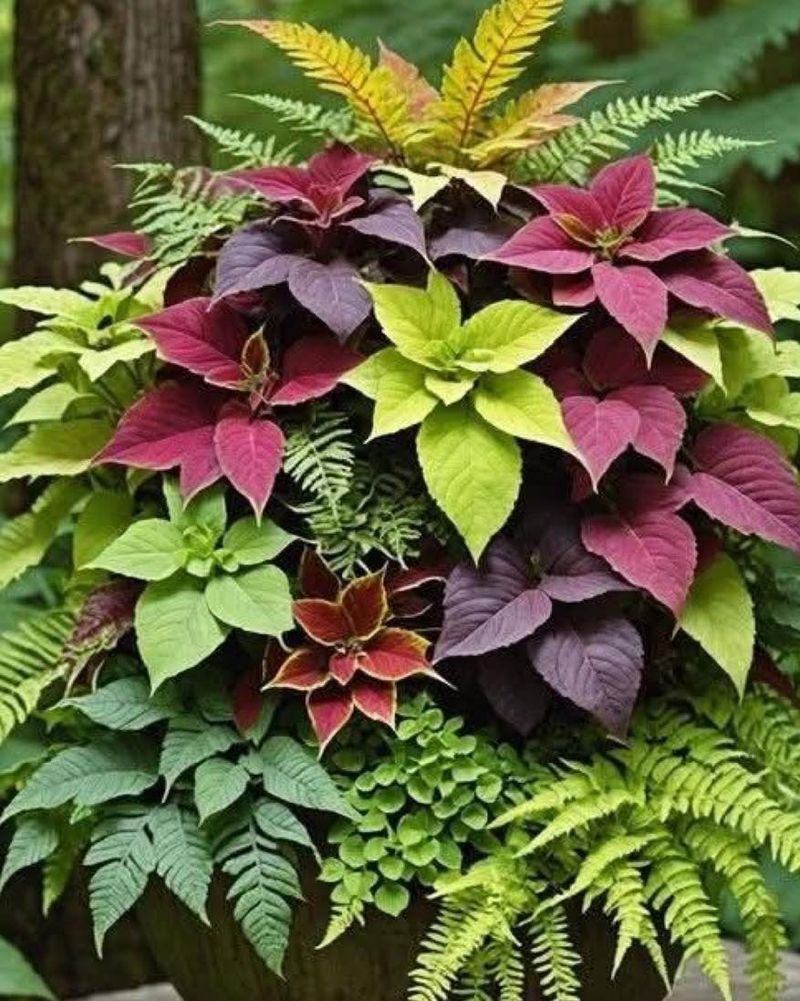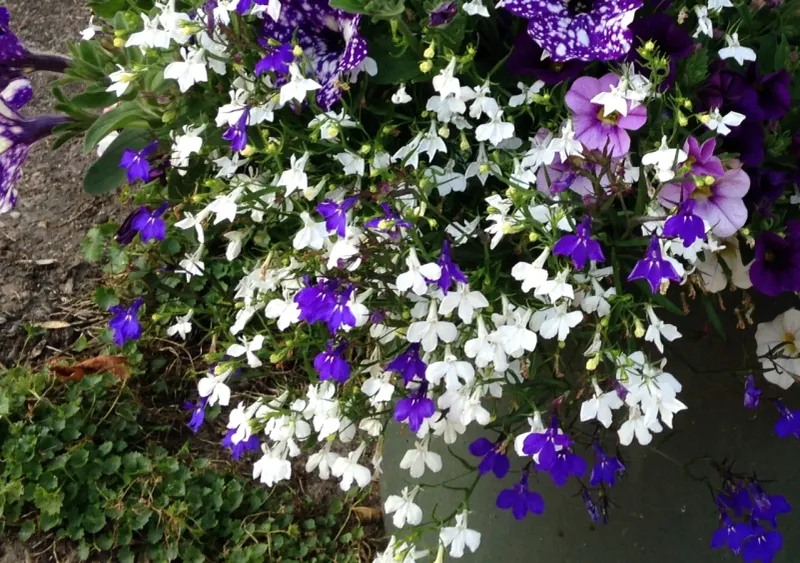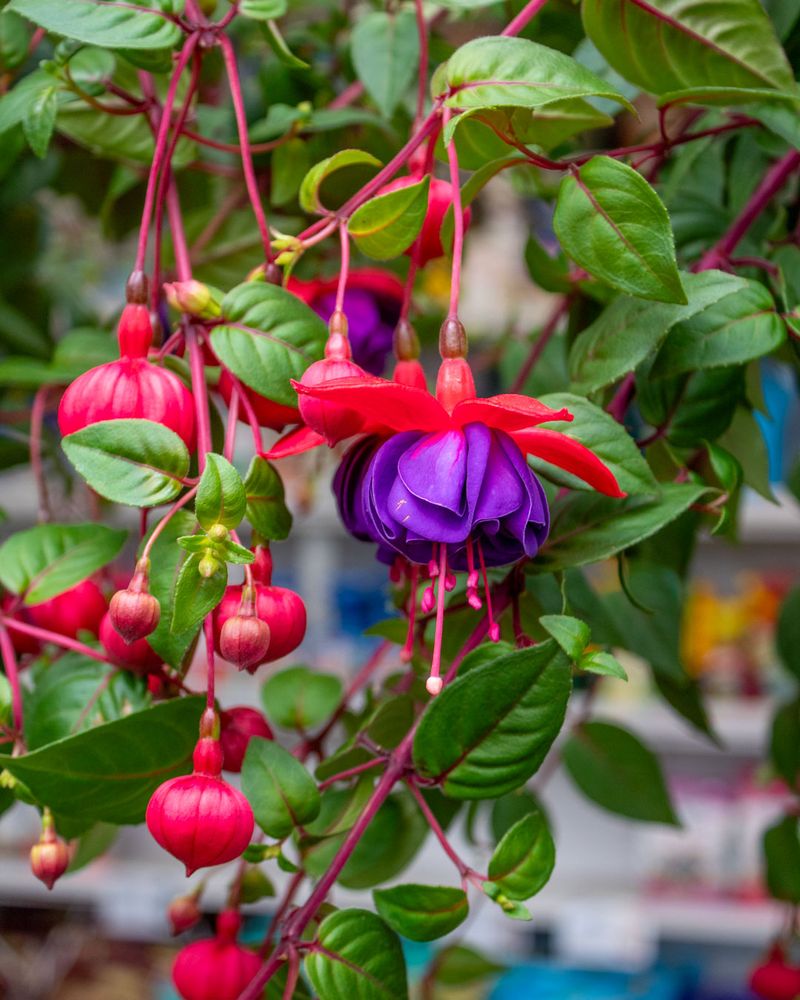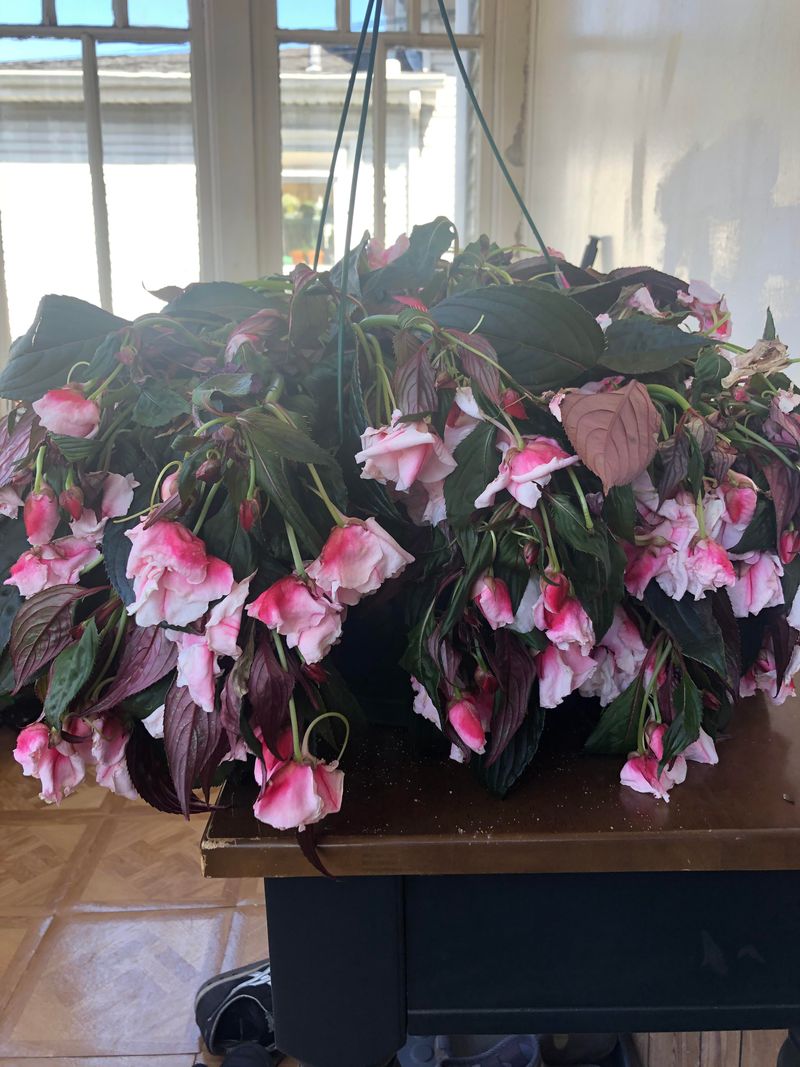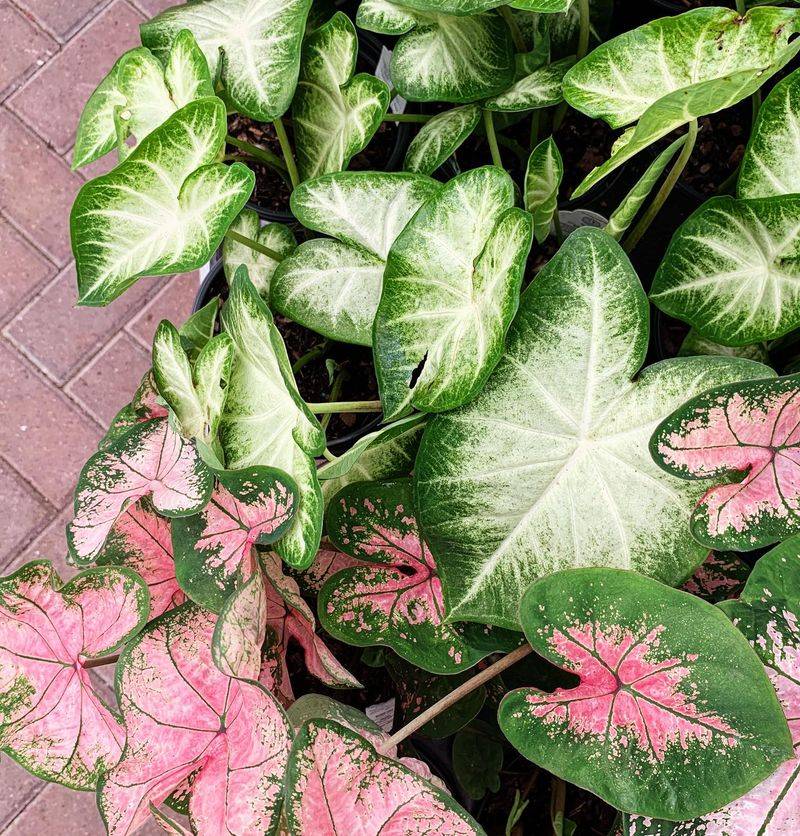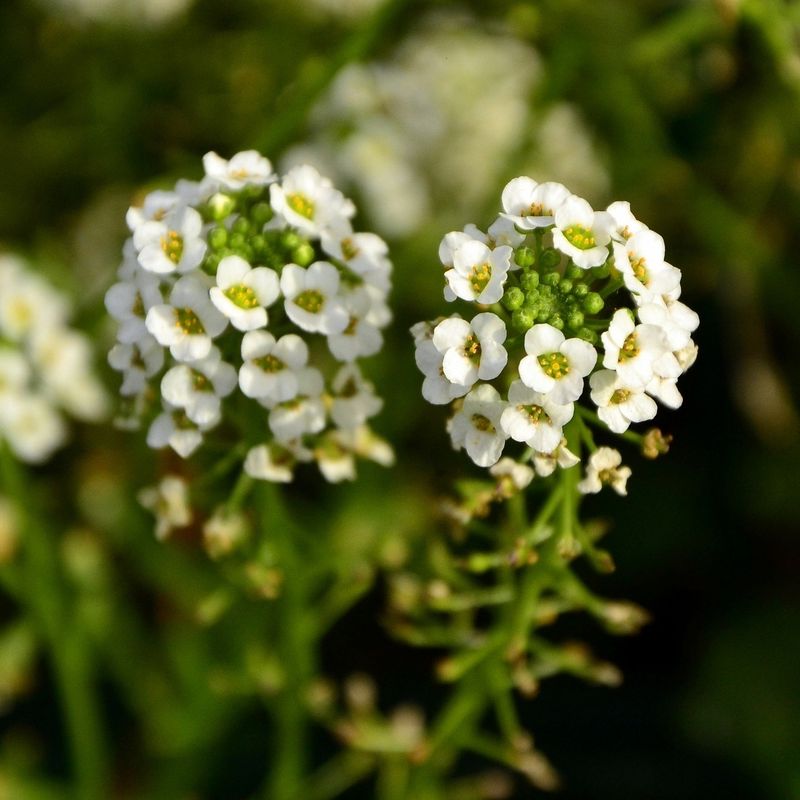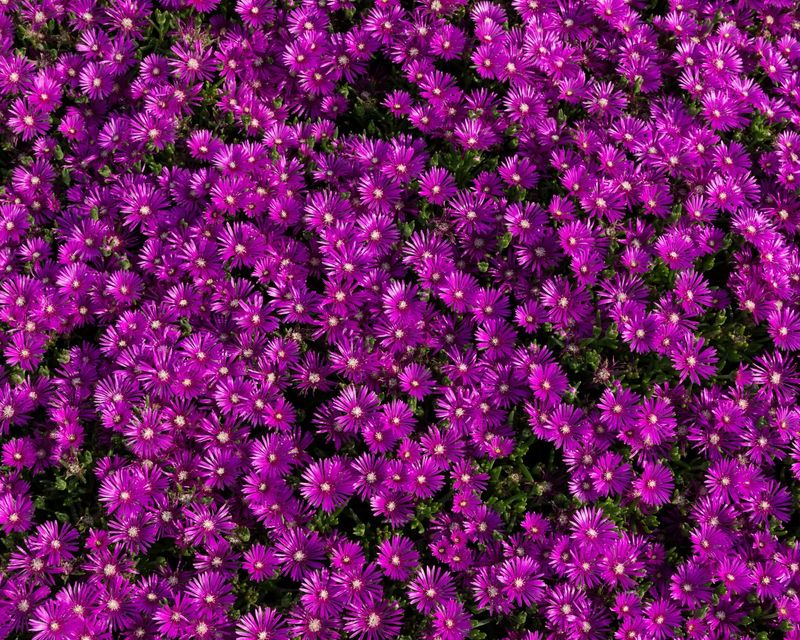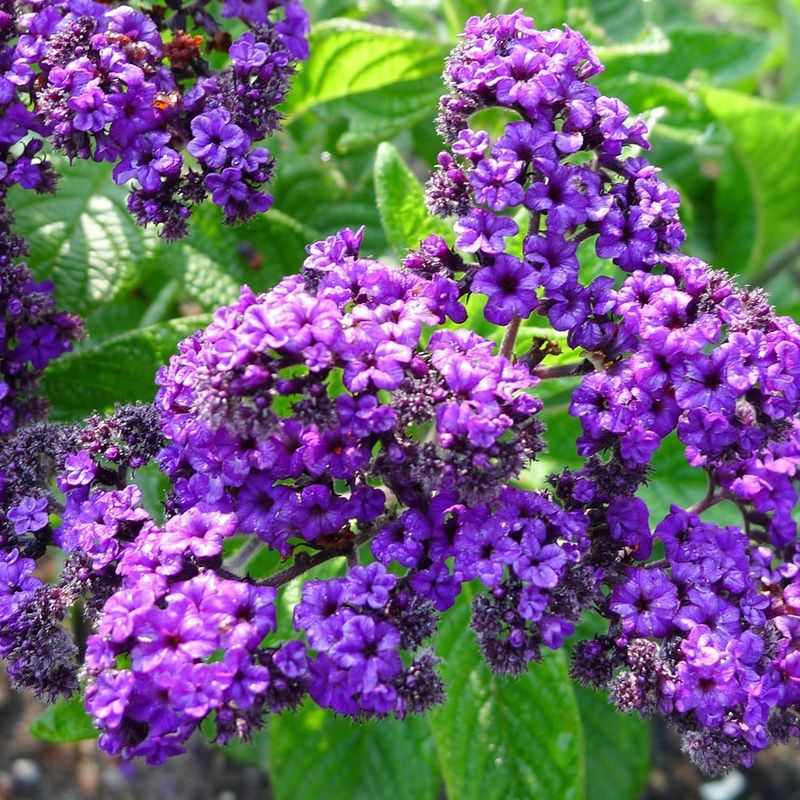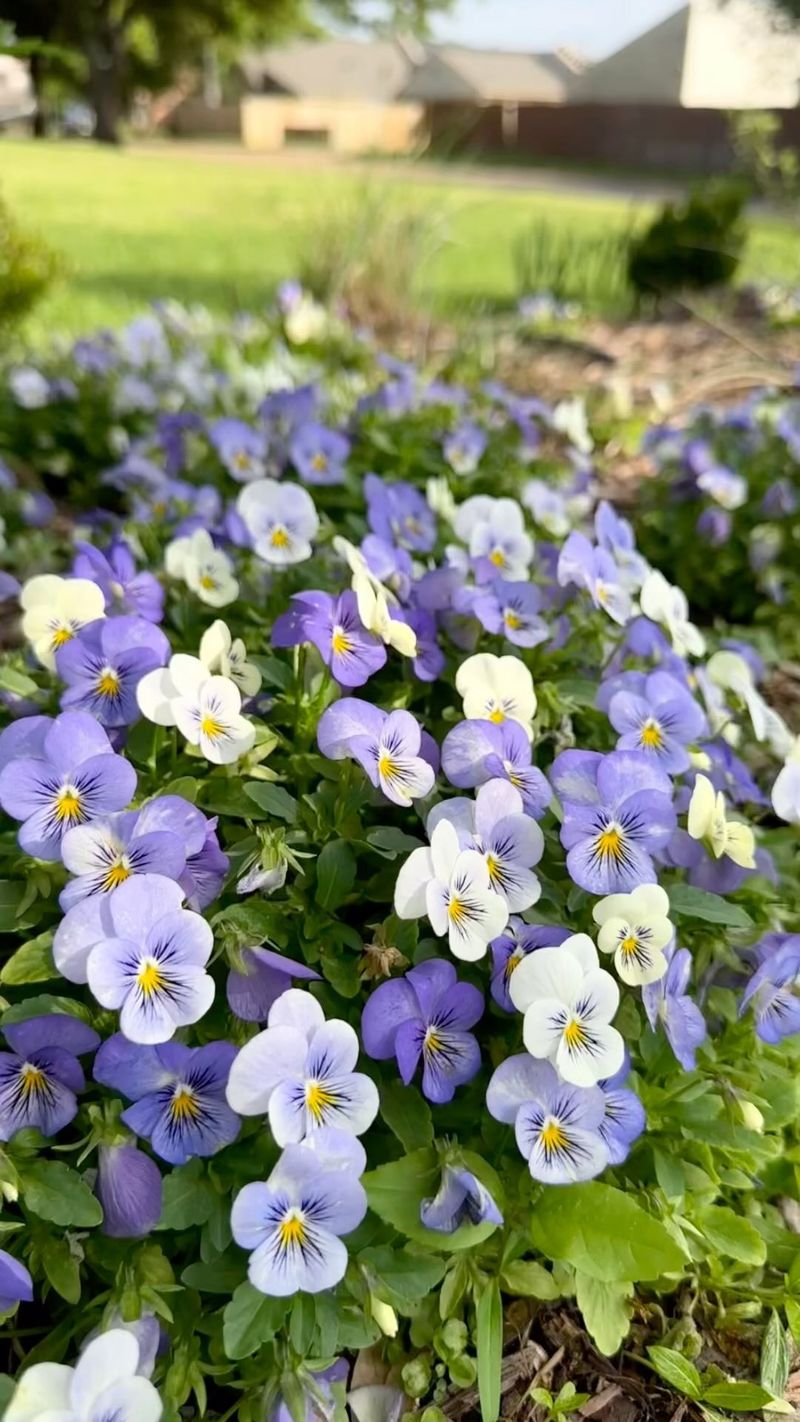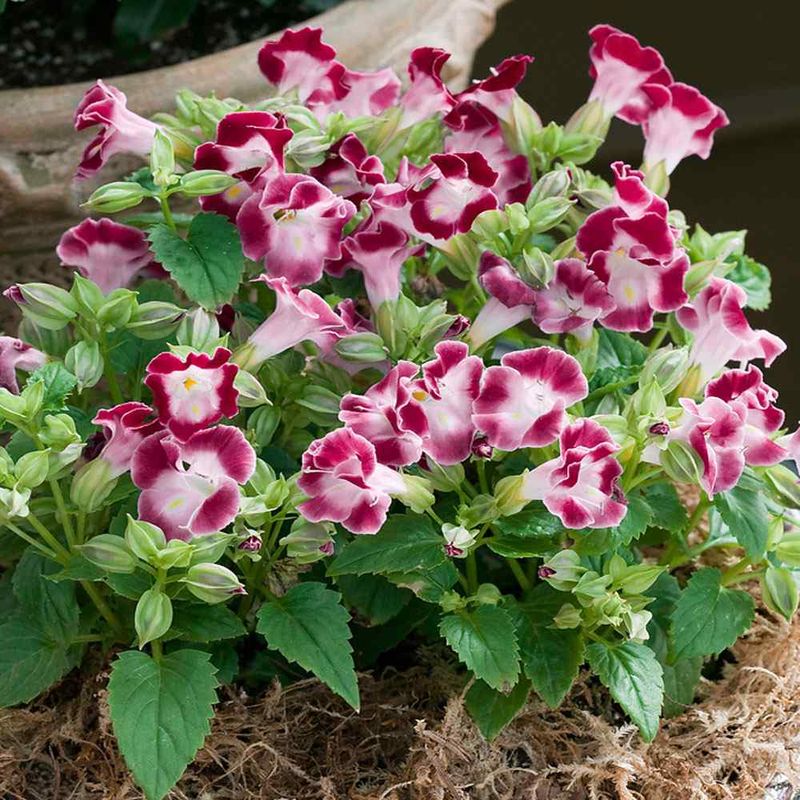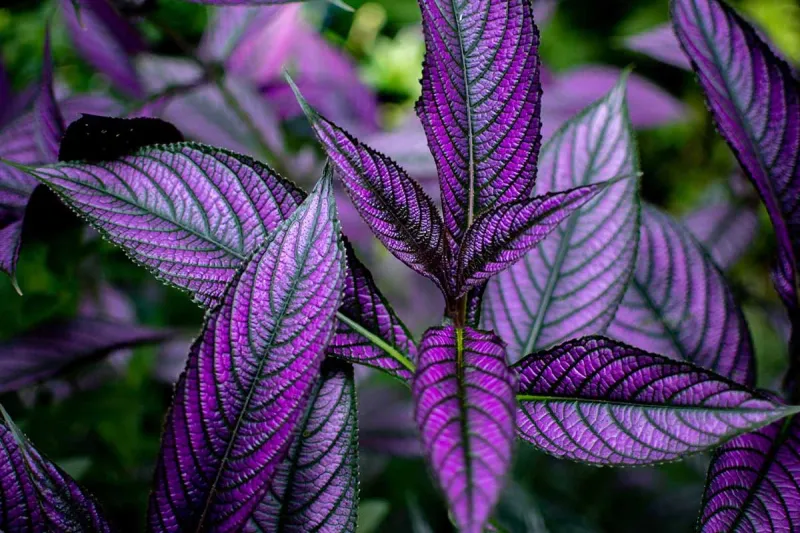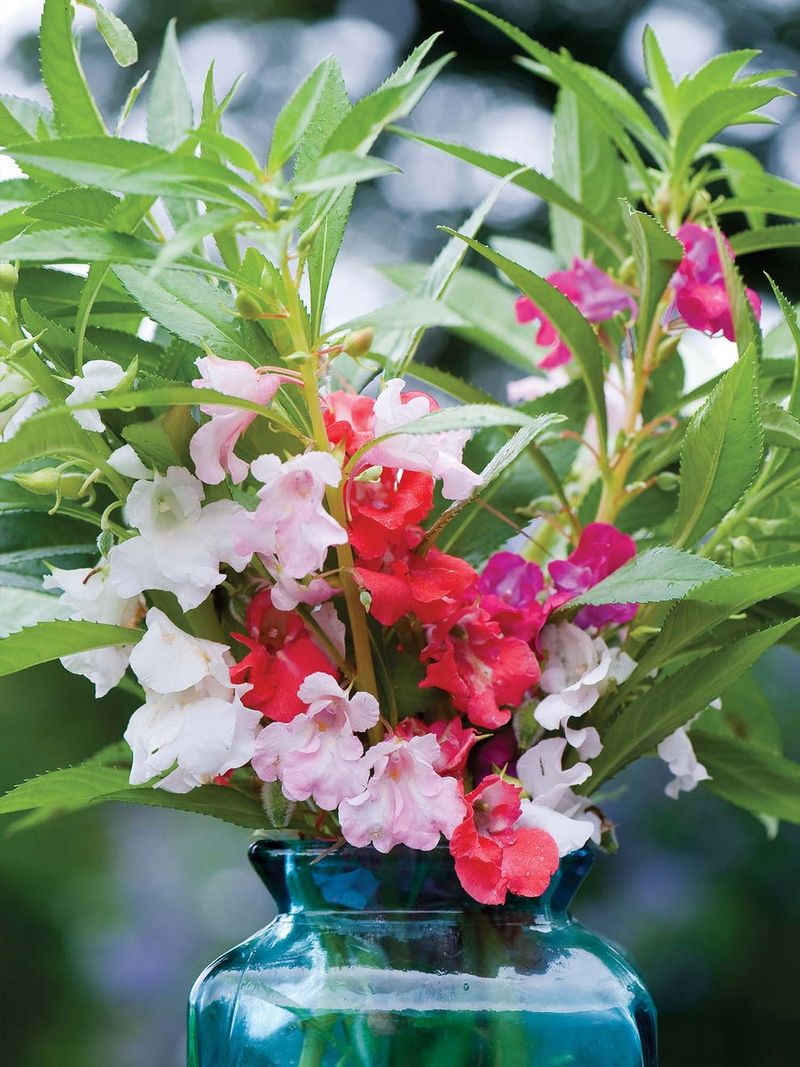Finding flowers that actually bloom in the shade can feel like searching for a unicorn—I can’t tell you how many times I’ve planted something hopeful, only for it to sulk in a dark corner. If you’ve got a shady yard or a spot under trees, you know the struggle.
ut here’s the good news: some annuals truly love the shade and don’t need full sun to put on a show. Once I found the right ones, those forgotten spots in my garden suddenly popped with color—and stayed looking good with barely any fuss.
If you’re tired of bare, gloomy patches in your yard, these shade-loving flowers might be exactly what you need. They’re easy to grow, full of personality, and ready to brighten up even the darkest corners.
1. Impatiens
These popular shade dwellers are practically foolproof for beginners. I planted some beneath my maple tree last summer, and they bloomed nonstop until first frost without much fuss.
The mounded plants come in nearly every color except true blue, with single or double flowers depending on the variety. Some newer types resist the downy mildew that plagued older varieties.
Water them consistently at soil level to prevent leaf spotting. I’ve found they perform especially well in containers where drainage is good and you can control moisture levels better than in ground beds.
2. Begonias
Wax begonias are my go-to when nothing else seems to work in deep shade. Their glossy leaves look attractive even when they’re not flowering, adding texture to dark corners.
The plants stay compact but fill out nicely, rarely needing pruning or deadheading to maintain their shape. My grandmother grew them along her north-facing foundation for decades—they’re that reliable in shade. Look for varieties with bronze foliage if you want extra visual interest.
They handle heat better than many shade annuals and won’t collapse during summer humidity like some more delicate flowers.
3. Torenia
Nicknamed ‘wishbone flower’ for the tiny wishbone-shaped stamens inside each bloom, torenia brings exotic-looking flowers to shade gardens. The trumpet-shaped blooms feature contrasting throats that almost look hand-painted.
Last season, I tucked some into a north-facing window box where impatiens had struggled. They flowered continuously without deadheading and even attracted tiny hummingbirds to my surprise. Give them consistently moist soil but avoid waterlogging their roots.
They pair beautifully with trailing plants in containers and won’t mind if larger plants partially shield them from what little sun they receive.
4. Coleus
While technically grown for foliage, modern coleus varieties produce small flower spikes that pollinators love. The real show, however, is the kaleidoscope of leaf patterns and colors that brighten shade gardens without actual blooms.
Many gardeners pinch off the flower spikes to encourage bushier growth, but I’ve started leaving them for the bees. The leaves come in mind-boggling combinations of burgundy, chartreuse, pink, purple, and nearly black.
Newer sun-tolerant varieties exist, but traditional coleus performs best with protection from harsh afternoon rays. Just one plant can offer more visual impact than a dozen ordinary flowers in a shady spot.
5. Browallia
Sometimes called sapphire flower, browallia produces star-shaped blooms in shades of blue, white, or purple that seem to float above the foliage.
The plants maintain a naturally rounded shape without much intervention. My neighbor grows these in her woodland garden where they receive just an hour of morning sun. They’ve performed far better than the lobelia she tried previously in the same spot.
Space plants about 8 inches apart as they fill in quickly. The blue varieties are especially valuable in shade where true blues are hard to find. For best results, keep soil consistently moist but not soggy through summer.
6. Lobelia
The cascading habit of trailing lobelia makes it perfect for hanging baskets in partial shade. Those tiny blooms might look delicate, but they’re surprisingly resilient in cool, shady conditions.
Heat is their nemesis, not lack of sun. During a particularly hot July, my front porch lobelias took a break from flowering but rebounded beautifully once temperatures moderated in late summer.
Choose from classic blue, purple, or white varieties. The ‘Crystal Palace’ blue has been growing in my grandmother’s garden for generations—a testament to its staying power. Feed lightly but regularly for continuous bloom.
7. Fuchsia
Those distinctive dangling blooms look almost too exotic to be real, but fuchsias are surprisingly easy to grow in shade. The pendant flowers attract hummingbirds like nothing else in my garden—I’ve counted three different birds visiting at once.
Upright varieties work well in beds, while trailing types are spectacular in hanging baskets. They prefer cooler temperatures and will sulk during heat waves, so provide afternoon shade even in northern gardens. Keep the soil consistently moist and feed regularly.
My potted fuchsias from last year overwintered successfully in my basement and returned even larger this season with minimal care.
8. New Guinea Impatiens
Unlike their smaller cousins, New Guinea impatiens feature larger, showier blooms and more substantial foliage. The leaves often have interesting variegation or reddish tints that add visual interest even between blooms.
They’re completely resistant to the downy mildew that devastated traditional impatiens years ago. My shaded deck containers have been filled with these reliable performers for three seasons straight with zero disease issues.
They cost a bit more than standard impatiens but deliver more impact per plant. Provide consistent moisture without wetting the foliage and they’ll reward you with flowers from planting to frost.
9. Caladium
While not grown for flowers, caladiums create such a spectacular foliage display that you won’t miss the blooms. Their heart-shaped leaves in combinations of white, pink, red and green illuminate dark corners like nothing else.
Plant the tubers after soil has thoroughly warmed in late spring. My north-facing foundation bed transforms from boring to tropical once these beauties unfurl their leaves in June.
In colder regions, dig up tubers before frost and store in a paper bag over winter. Alternatively, treat them as annuals—they’re affordable enough to replace yearly. Pair with ferns for a woodland look or with begonias for season-long color.
10. Sweet Alyssum
Though traditionally considered sun-lovers, newer alyssum varieties perform surprisingly well in partial shade. The honey-scented blooms create a frothy carpet that softens garden edges and attracts beneficial insects.
Last year I experimented with planting some in a dappled-shade border beneath a redbud tree. While not quite as floriferous as their sun-grown counterparts, they bloomed steadily and filled in nicely. The white varieties seem most shade-tolerant in my experience.
Give them well-draining soil and occasional trimming if they stretch too much. Their delicate fragrance is especially noticeable in evening hours—worth planting near seating areas.
11. Polka Dot Plant
The speckled foliage of Hypoestes phyllostachya creates a confetti-like effect in shade gardens. Pink, white, or red spots splashed across green leaves provide constant color without relying on flowers, though they do produce tiny lavender blooms.
They’re perfect for brightening dark corners where few plants thrive. My bathroom window gets barely any direct light, yet a polka dot plant has flourished there for months, adding cheer to an otherwise dim space.
Pinch stems regularly to encourage bushiness rather than legginess. These adaptable plants work equally well in garden beds or containers and combine beautifully with solid-colored shade lovers like begonias.
12. Heliotrope
The vanilla-scented purple flower clusters of heliotrope bring both fragrance and color to shady spots. Despite its sun-suggesting name, modern varieties perform admirably in bright shade or morning-sun-only locations.
Plant near windows or pathways where you’ll regularly catch their sweet scent. The deep purple varieties seem most shade-tolerant, developing richer color with some protection from intense sun. Feed regularly to encourage continuous blooming.
My grandmother called these “grandma flowers” because they were popular in Victorian gardens, but modern cultivars are more compact and longer-blooming than their ancestors. Butterflies find them irresistible, even in shadier locations.
13. Viola
These cheerful cousins of pansies offer more heat tolerance and shade adaptation than their larger relatives. The dainty flowers come in every color imaginable, often with contrasting “faces” in the center.
Spring and fall are their peak seasons, but in shady locations they continue blooming well into summer. My woodland garden path is lined with self-sown violas that return year after year from dropped seeds. Use them to underplant taller shade annuals or edge a woodland path.
Their compact size belies their toughness—these little plants can handle light foot traffic and bounce back from minor damage better than you’d expect.
14. Wishbone Flower
Not to be confused with torenia (which shares this common name), Nemesia brings snapdragon-like blooms to shady spaces. The compact plants flower prolifically in cool weather and continue producing in shade when summer heat arrives.
Mine grew alongside hostas last year and complemented their foliage beautifully. The flowers come in sophisticated color combinations—my favorites are the bicolors with contrasting throats. Provide good air circulation to prevent powdery mildew in humid conditions.
A light shearing when plants start looking tired will rejuvenate them for another flush of bloom. Their subtle fragrance is an unexpected bonus in shade gardens.
15. Persian Shield
The iridescent purple leaves of Strobilanthes dyerianus create a stunning focal point in shade gardens. Though grown primarily for foliage, it produces small tubular flowers in late season that complement the dramatic leaves.
This plant adds a tropical feel to northern gardens and thrives in the protection of dappled shade. My specimen reached nearly three feet tall in a sheltered north-facing location, creating drama where most plants would disappear.
Provide rich, consistently moist soil for best performance. The metallic sheen intensifies in bright indirect light rather than deep shade. Pair with chartreuse coleus for a combination that practically glows in dark corners.
16. Balsam
An old-fashioned favorite that deserves rediscovery, balsam produces camellia-like blooms directly on its stems without the need for sunshine. The plants have a naturally upright growth habit that requires no staking.
Seeds can be directly sown in garden soil after frost danger passes. My grandmother scattered them in her shade garden years ago, and we still find volunteers popping up in unexpected places—a delightful surprise each spring.
The flowers come in pink, red, purple, and white, often speckled or streaked. Unlike many annuals, they actually prefer poor soil—too much fertilizer results in lush foliage but fewer blooms.

